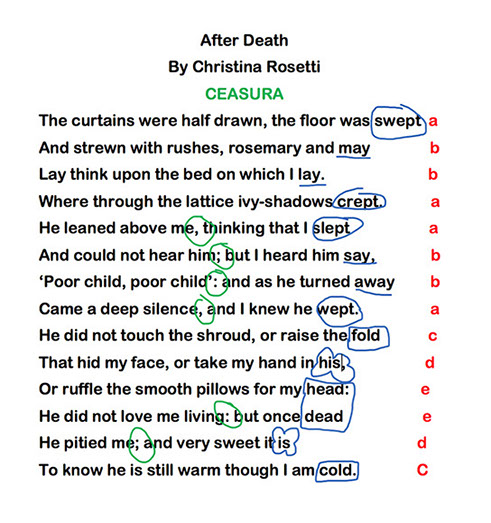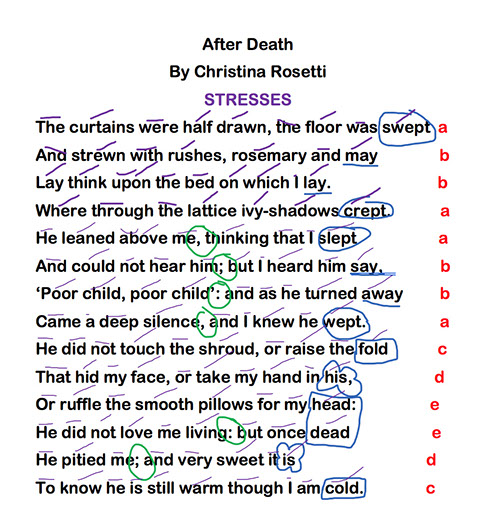"After Death"
by Christina Rossetti
A New Critical Theory Analysis
By Ashley Zizich

Caesura in poetry marks a pause from the natural rhythm. A caesura in poetry is a rhythmical pause that often occurs in the middle of a line, but also sometimes at the beginning or end. Caesura often occurs with punctuation, and in the case of "After Death", with a comma, colon, or semi colon. Caesura can be medial (occurring in the middle of a line", initial (occurring at the beginning of a line), or terminal (occurring at the end of a line). Caesura is used purposefully, helping in the rhythm of the piece to create a desired effect. Without the pauses that caesura creates, the words would run together and become meaningless.
The caesura's in "After Death" help create a separation between the speaker and the man. Lines 5 through 8 all contain hard medial caesura's creating a separation in action and thought. The caesura's in the sonnet are marked in green.

The rhythm of the words in a poem is like the beat in music, and is marked by stresses. This rhythm makes the poem sound musical and helps the reader or listener understand how to read the poem.
Rhythm stresses in "After Death" are made up of stressed and unstressed syllables or words, marked with a straight, slanted, or bowed line above the word in purple. A stressed syllable or word in a poem is marked with a / over it. An unstressed syllable or word is marked with a - over it. The beat of the English language has a predictable time interval between stressed and unstressed syllables. The stresses in the sonnet help create the rhythm that reflect the natural way of reciting the words, creating a beat.
Play the video for a final recitation of "After Death". This reading takes into consideration the poetic elements after completing a "Close Reading" of the text.